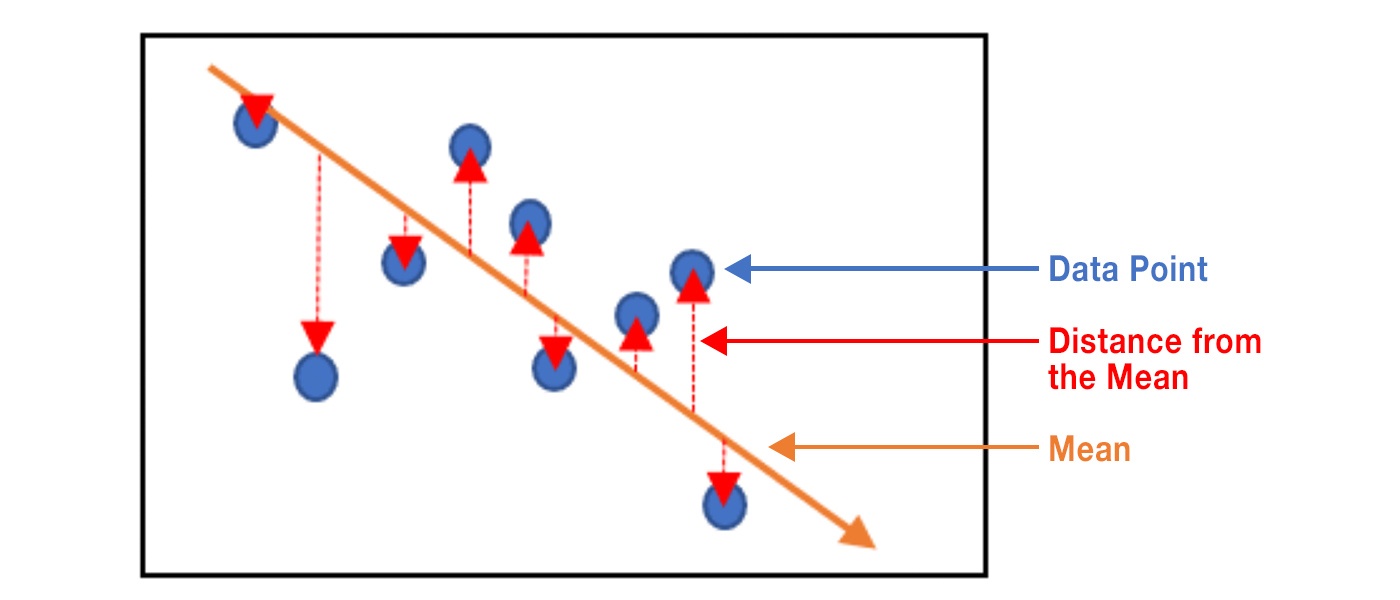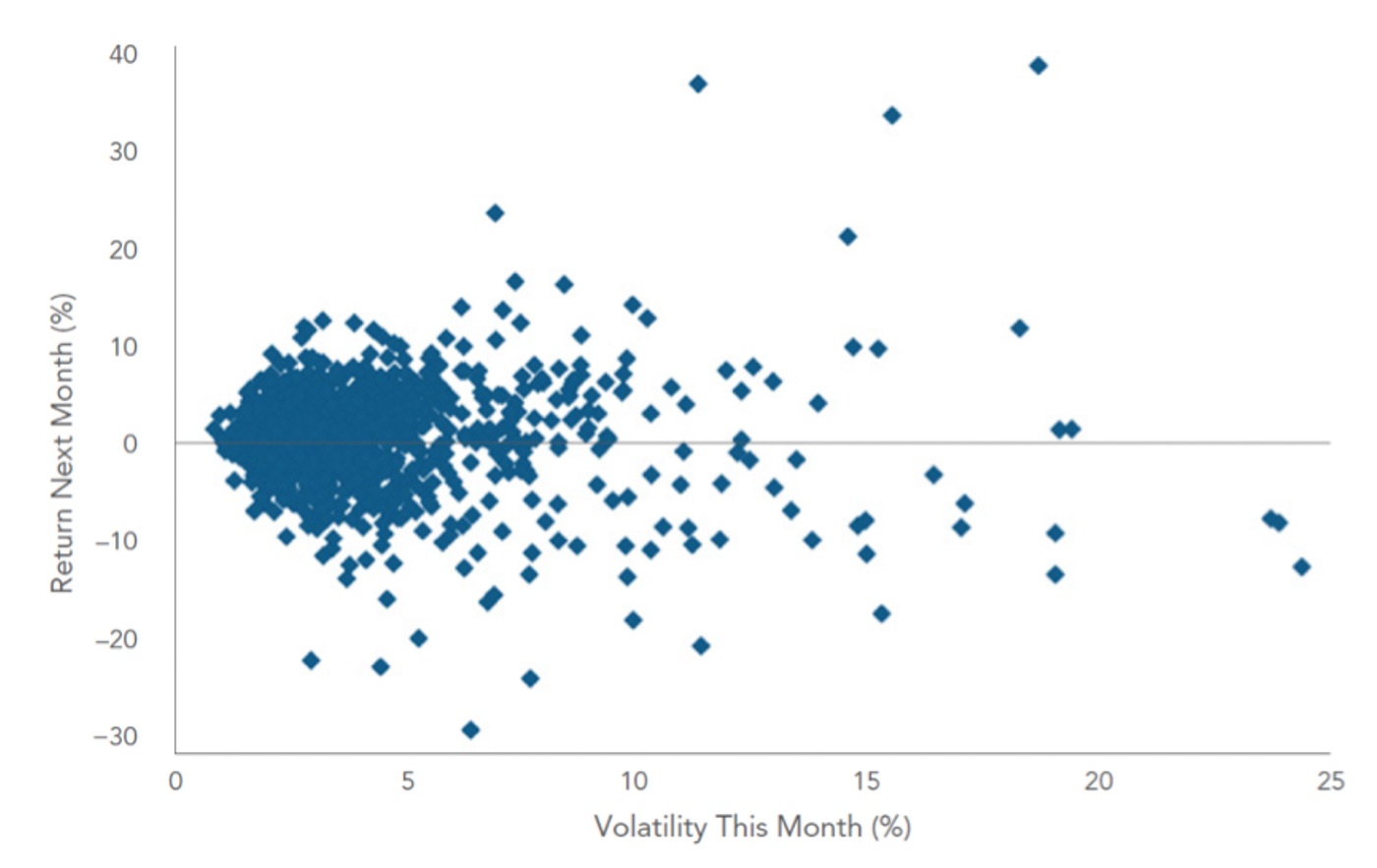How well do we really understand volatility?
How well do we really understand volatility?

While volatility is often used in the financial industry as a proxy for risk, many people remain misguided about how volatility is actually calculated, what it represents, and how and why it behaves the way it does.
Few investors, or even most financial advisors, are likely aware of a mathematic concept called generalized autoregressive conditional heteroskedasticity (GARCH), but GARCH represents a defining characteristic of volatility—the construct used by many in the investment community to assess the risk of traded securities.
For a concept so intimately related to the risks and returns of investments, there are surprisingly widespread misperceptions about what volatility actually represents, how it behaves, why it differs from one stock to the next, and how it varies over time even for the same stock. It may be time for a reality check on our perception of this unique construct and the way we use it.
Perceptions notwithstanding, volatility is based on standard deviation—a somewhat common statistical characteristic of a data series like a mean, median, or correlation coefficient. Specifically, it is a measure of the variance or dispersion of the data from the mean of the series. Visually, it would be represented by the orange arrows in the image in Figure 1. The lengths of the arrows are squared to eliminate the negative values from data points below the mean and are then summed and square-rooted to yield volatility, which is then annualized for uniformity and expressed as a percentage or its decimal equivalent.

Source: Investopedia
The data points for calculating a stock’s volatility, however, are not past prices, as some might assume. They are past returns, generally figured as daily returns. It is necessary to use returns rather than price in order to render volatility independent of price. Otherwise, the higher the price of a stock, the greater the volatility would be, and that would not represent a relevant measure of risk at all.
This presents one of the first problems in understanding volatility—the fact that it needs to be based on relative, rather than absolute, price change. This makes it more difficult for people to visualize in their minds or determine visually from a price chart, and it leads to volatilities that may not be at all intuitive. A stock, for example, that goes up or down by exactly 1% every day for a month would have a volatility of zero for that period.
A core finding in behavioral finance is that our brains often misinterpret statistics and probability. Even simple statistical constructs such as an average of a data series can sometimes lead to distorted perceptions, as the old parable about the man who cannot swim crossing the river illustrates.
If the man is 6 feet tall and the average depth of the river is 4 feet, most would assume that the man can cross safely. But an average of 4 feet might incorporate an 8-foot hole at the deepest part, introducing the possibility that the man could drown. The simple average in this instance is a misleading measure to use. In the same way, volatility can also sometimes represent a misleading measure of risk.
A second issue with volatility is that it is calculated from historical data and can, therefore, make absolutely no claim to serving as an effective predictor of future volatility. Volatility is typically calculated based on the previous 100 days, though you may also encounter volatilities that are calculated on as little as the last 20 days or as much as the last 250 days. (Since it is always annualized, you may not even know what period your source actually used for the calculation.)
A relatively short period like 20, 50, or 100 days makes the implicit assumption that the volatility over the next year will be similar to that of the last few months. Given that volatility on stocks can easily change from month to month by a factor of two to three times or more, “current” volatility measures have little value for predicting the future.
Volatility is simply not a constant in any way, shape, or form, and it can be wildly sensitive to news, sentiment, and the whims of the trading audience. It varies continually, even for the same stock over time. It is not uncommon to see a stock’s volatility double or triple in response to an important news item or an earnings announcement, only to drop back down within days or weeks afterward.
A question that has intrigued volatility watchers for some time is whether it provides clues to short-term direction. Numerous studies show little evidence that it does.
Using monthly returns for the U.S. equity market calculated from the Fama/French Total Market Index between 1927 and 2016, AssetBuilder computed and plotted returns versus the previous month’s volatility. They noted that “the differences in average returns were not reliably different from zero. In other words, at a glance there is not an economically meaningful difference in average equity returns based on the volatility of the prior month.”

Source: AssetBuilder
Thanks to options, volatility has a cousin called implied volatility, which is thought to represent a more useful form of the statistic in that it is forward-looking. This is theoretically true but riddled with problems when you look at it closely. The implied version of volatility is available to us whenever there are listed options available on a stock or index, as the prices of the options allow us to essentially reverse-engineer an implied volatility from them. As theory would have it, implied volatility represents the collective views of options players who generate a sort of “volatility discovery” on stocks in much the same way that futures traders create price discovery on the future price of commodities.
But in practice, options give us numerous implied volatilities to choose from on any given stock. Literally every different option on a given stock generates a different implied volatility. That means there can be hundreds or even thousands of different implied volatilities for a single stock, and they will differ markedly among the various strikes and expirations, often resulting in volatility skews (anomalies between strikes or months that savvy option traders frequently try to exploit).
Furthermore, options traders are notoriously shortsighted. They can cause the prices on short-term options expiring over the next few weeks to reflect higher or lower implied volatility while leaving the implied volatilities in longer-dated expirations relatively unchanged. This makes interpreting the implied volatilities of options more of an art than a science.
Beta is also used as a measure of a stock’s risk, essentially measuring its volatility relative to that of a broad market index. Beta is generally measured over a longer period, giving it a bit more weight as a risk measure and providing us with something we can more easily relate to than volatility by itself. (Put simply, a stock that has larger moves than the market over time has a beta above 1.0. If a stock moves less than the market, the stock’s beta is less than 1.0.)
Furthermore, beta gives us a quick sense of what an individual stock might do in a given market scenario—something you cannot determine from volatility. On the other hand, beta is not without its own variability issues and calculation quirks. It tends to vary over time and with market conditions; to assume that beta is simply calculated by dividing a stock’s period return by that of the market is incorrect. In addition, betas can be significantly affected by the market’s risk premium over the risk-free interest rate.
The introduction of the CBOE Volatility Index (VIX) some 16 years ago and the subsequent trading of derivatives on it have generated a great deal of visibility for volatility. The resulting insights we have gained have been significant, and the window into volatility’s behavior quite enlightening. Nonetheless, it has helped us observe the behavior of volatility without necessarily explaining that behavior, and this has increased the opportunity to misconstrue volatility or to overreact to it.
One should not lose sight of the fact that the VIX Index tracks the implied volatility of only a single item—the S&P 500 Index. Therefore, VIX should be viewed in the context of short-term options trading on the SPX Index, which is what drives its value. SPX options are largely the province of institutions with substantial equity portfolios to hedge, and their behavior may not reflect the same behavioral factors as the options activity on individual stocks. Institutions, for example, will rush to buy puts on the SPX to hedge portfolios (a move that directly impacts implied volatility) but do not exhibit such behavior to the same degree with individual stocks. Moreover, the volatility of the S&P 500 Index is much more likely to be a function of general economic sentiment, while the volatility of individual stocks is more dependent on their individual fundamentals and news.
(Note: CBOE provides a number of volatility indexes, including those for many non-S&P 500 indexes, ETFs, interest rates, commodities, currencies, and individual stocks—even a “Volatility of VIX” Index.)

Shaded areas represent recessions
Source: macrotrends
Using volatility as a proxy for risk is handy, easy to calculate, and somewhat uniform (as long as one uses the same historical period for calculating it). But like many other financial measures, its mathematical reality can belie the generalized perceptions it presents. The notion that it describes the ups and downs of security prices is as oversimplified as saying baseball is about hitting a hard round object with a wooden stick. At best, volatility can be misleading; at worst, it can be counterintuitive as a measure of the risk in a given security. Thus, the larger question still looms: Does volatility really indicate risk in the way a manager thinks and deals with risk?
While every manager should answer this question for themselves, I believe most would say no—certainly not as the sole measure of risk. Managers assess risk in a number of different ways—earnings predictability, obstacles to growth, historical drawdowns, economic-related, competitive, and so on. Volatility in the past may have been affected by any of these plus all kinds of other uncertainties. Without knowing how any of these contributed to volatility in the past, volatility serves to obfuscate rather than clarify risk. Chances are that volatility will have given numerous false-positive signals about risk in the past in addition to failing to identify actual risks until they were already apparent to everyone.
Volatility has been effectively used by institutional investors to optimize portfolio construction and help tilt large portfolios to adjust to economic conditions. But when assessing an individual stock for risk, or examining the risks of underdiversified portfolios, volatility is no match for comprehensive fundamental and technical analysis. There is little evidence to show that either historical or implied volatility provides a way of discerning what future volatility, much less price, will be. If we define risk in the more conventional way people perceive it—the probability of a security losing value or underperforming a benchmark—volatility seems to be not just of little value in that regard, but frequently misleading. What people want to know about risk is direction, and that is something volatility simply cannot provide.
Here are a few thoughts for individual investors and financial advisors that might help provide a better perspective on volatility:
- Recognize that volatility is not necessarily indicative of long-term risk or opportunity. It should be viewed as a short-term measure that varies with a complex set of behavioral and market variables.
- Jumps in volatility, whether historical or implied, should not be assumed to indicate that other market players know something about the future that you don’t.
- Expect volatility to change, sometimes dramatically, over time on individual stocks as well as the overall market—and for different reasons.
- Don’t overreact to spikes in volatility. Higher-than-normal volatility tends to be rather short-lived.
- Establish a meaningful reference point for evaluating volatility. I believe that one of the best ways to squeeze useful information from a stock’s volatility is to view it in the context of a stock’s own history. A few services provide historical information on the implied volatilities of stocks with options. McMillan Analysis Corp. uses a running two-year history of daily implied volatilities extracted from options and then tells you where today’s value is relative to the two-year range. Knowing that a stock’s implied volatility is 35% takes on a whole different meaning when its two-year range is 15%–40% than when it is 30%–90%.
- The volatilities of stocks (or funds and ETFs) in a client’s portfolio should be appropriate for their risk profile and your style and discipline as an advisor. It can be problematic to add a stock, fund, or ETF to a portfolio with a volatility of 80% when stocks in the portfolio have a 20% maximum drawdown rule!
- Volatility in and of itself is not the overriding issue for positive long-term investment outcomes. It is more about having shared expectations between an advisor and client for a portfolio’s performance under different market scenarios—how well risk and a client’s emotional reactions to volatility are managed.
Also, you might consider learning how to fluidly pronounce heteroskedasticity. It could come in handy when you need to make an impression!
 Richard Lehman is the founder/CEO of Alt Investing 2.0 and an adjunct finance professor at both UC Berkeley Extension and UCLA Extension. He specializes in behavioral finance and alternative investments, and has authored three books. He has more than 30 years of experience in financial services, working for major Wall Street firms, banks, and financial-data companies.
Richard Lehman is the founder/CEO of Alt Investing 2.0 and an adjunct finance professor at both UC Berkeley Extension and UCLA Extension. He specializes in behavioral finance and alternative investments, and has authored three books. He has more than 30 years of experience in financial services, working for major Wall Street firms, banks, and financial-data companies.
